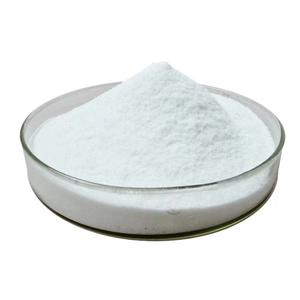Intro to Potassium Silicate Powder
Potassium silicate powder, a carefully ground type of the inorganic substance K ₂ O · nSiO two, is acquiring boosting attention for its multifunctional properties and varied industrial applications. Recognized for its high thermal security, excellent binding capacities, and chemical resistance, this material works as a critical component in areas such as building and construction, farming, shop job, surface therapy, and environmental remediation. As markets continue to look for lasting and high-performance products, potassium silicate powder emerges as a versatile solution with developing potential.
Chemical Structure and One-of-a-kind Characteristics
Potassium silicate powder consists of potassium oxide and silicon dioxide in varying ratios, typically expressed as K ₂ O · nSiO two, where the “n” value defines the molar ratio and significantly influences the physical and chemical actions of the material. This powder shows reduced solubility at ambient problems yet becomes responsive under heat or alkaline settings, making it excellent for controlled-release applications. Its capacity to develop strong molecular bonds with substrates gives it exceptional sticky and securing buildings, while its non-flammable nature enhances security in high-temperature procedures. Additionally, potassium silicate powder withstands deterioration and microbial strike, adding to lasting longevity in functional applications.
Production Processes and Technological Advancements
The manufacturing of potassium silicate powder involves either dry or damp synthesis approaches, each offering distinctive advantages relying on application needs. In the dry process, resources such as potassium carbonate and silica sand are thawed in a high-temperature furnace, after that cooled down and crushed into great powder. This approach appropriates for massive commercial production but requires considerable energy input. On the other hand, the wet process involves responding potassium hydroxide with amorphous silica under regulated conditions, followed by evaporation and drying to produce powdered kinds. Recent technologies consist of ultrasonic-assisted synthesis, microwave calcination, and nanostructuring techniques that enhance response efficiency, lower handling time, and boost item efficiency. These developments not only enhance useful buildings yet likewise align with worldwide patterns toward greener manufacturing methods.
Applications in Farming and Environmental Management
In agriculture, potassium silicate powder plays an essential function as a dirt conditioner and plant nutrient enhancer. It supplies bioavailable silicon and potassium– both essential aspects that strengthen plant cell walls, improve dry spell resistance, and improve condition and parasite resistance. Its use in rice, wheat, and sugarcane cultivation has demonstrated enhanced returns and reduced dependence on artificial pesticides. Beyond agriculture, potassium silicate powder contributes to environmental protection initiatives by paralyzing heavy steels in contaminated dirts and acting as an adsorbent in wastewater treatment. Its ion-exchange ability makes it possible for reliable removal of contaminants like lead, cadmium, and arsenic, supporting lasting land and water repair efforts.
Usage in Building And Construction and Commercial Applications
The building and construction sector leverages potassium silicate powder for its cementitious and securing residential or commercial properties. It is made use of in concrete admixtures to densify surface areas, enhance compressive toughness, and minimize leaks in the structure. In finishes and sealers, it gives fireproof and water resistant layers, enhancing structure long life and safety. The foundry industry benefits from its usage in mold binders, where it boosts the refractoriness and dimensional stability of sand mold and mildews. Moreover, in surface area treatment modern technologies, potassium silicate powder functions as a crucial component in anti-corrosion coverings for steel substratums and in ceramic lusters to boost gloss and attachment. These diverse applications underline its importance in commercial innovation and framework growth.
Arising Roles in Advanced Technologies
Current developments have actually increased the scope of potassium silicate powder into advanced technical domain names. Scientists are exploring its integration right into smart materials, including self-healing concrete and receptive finishes that adjust to ecological adjustments. In nanotechnology, potassium silicate nanoparticles are being examined for their improved reactivity and functionalization capacities, opening new possibilities in catalysis, sensor growth, and biomedical applications. Additionally, ongoing researches recommend prospective uses in eco-friendly compounds and biodegradable product packaging systems, where its natural origin and reduced poisoning deal eco-friendly benefits. These arising functions show the substance’s adaptability and its growing relevance in future-oriented material scientific research.
Obstacles and Sustainability Factors To Consider
Regardless of its lots of benefits, the prevalent use of potassium silicate powder encounters challenges connected to production costs, scalability, and environmental influence. Energy-intensive production processes add to carbon discharges, triggering research right into renewable energy-powered synthesis and waste-derived silica resources. Additionally, there is a need for standard safety and security procedures to ensure proper handling and lessen job-related exposure. Ongoing life-cycle analyses aim to measure its eco-friendly impact and overview lasting sourcing approaches. Attending to these problems is necessary for preserving the product’s stability in a resource-constrained world.
Future Potential Customers and Market Expectation
Looking in advance, the need for potassium silicate powder is anticipated to expand, driven by expanding applications in green construction, precision farming, and progressed manufacturing. Developments in solution and handling will additionally improve its functionality and widen its market reach. Collaborative initiatives in between academic community, industry, and regulatory bodies will certainly contribute in promoting liable manufacturing and usage criteria. Incorporating electronic modern technologies such as AI-driven procedure optimization and IoT-enabled tracking could open new efficiencies in its handling and deployment. As sustainability continues to be a main motif in worldwide growth, potassium silicate powder stands poised to play a crucial role fit a cleaner, smarter, and much more resilient industrial landscape.
End of Document
This post provides a thorough yet concentrated expedition of potassium silicate powder, stressing its clinical structure, useful applications, and future trajectory. Structured for quality and depth, it mirrors the present state of expertise while highlighting the innovation driving its continued importance in contemporary product scientific research.
TRUNNANO is a supplier of boron nitride with over 12 years of experience in nano-building energy conservation and nanotechnology development. It accepts payment via Credit Card, T/T, West Union and Paypal. Trunnano will ship the goods to customers overseas through FedEx, DHL, by air, or by sea. If you want to know more about potassium silicate, please feel free to contact us and send an inquiry(sales5@nanotrun.com).
Tags: potassium silicate,k silicate,potassium silicate fertilizer
All articles and pictures are from the Internet. If there are any copyright issues, please contact us in time to delete.
Inquiry us


